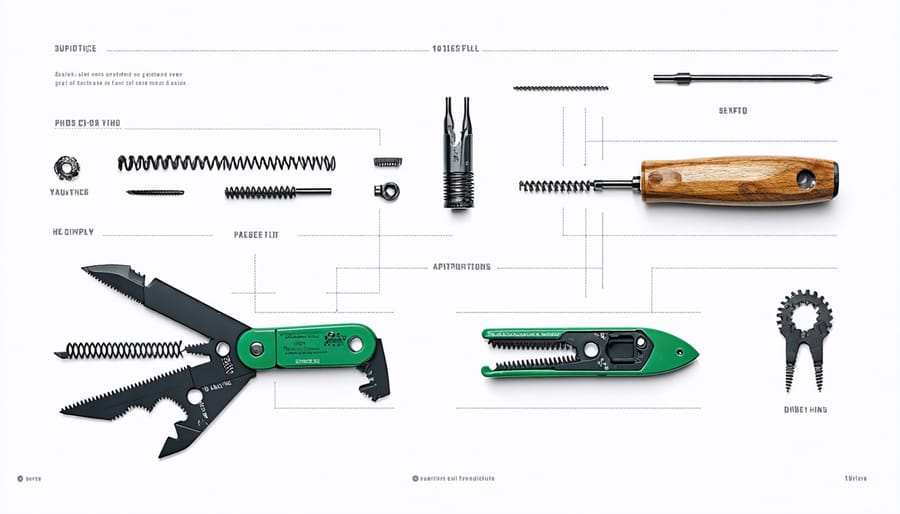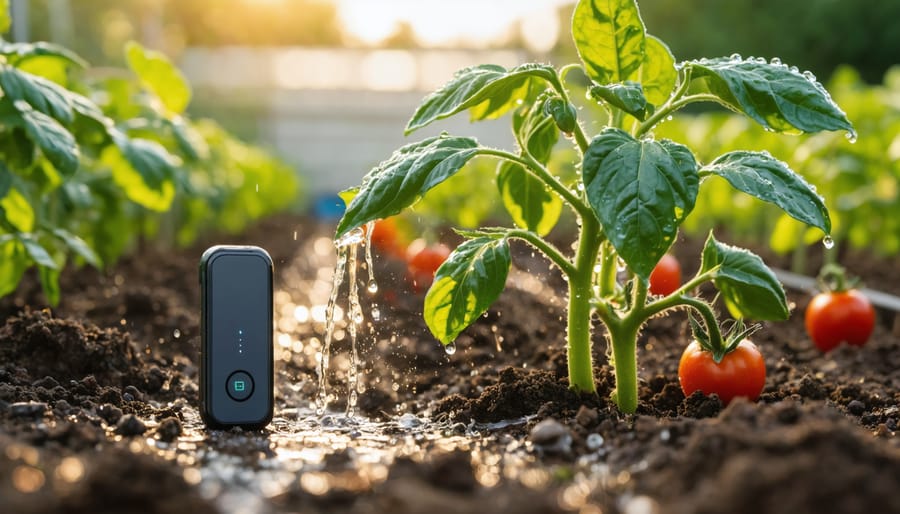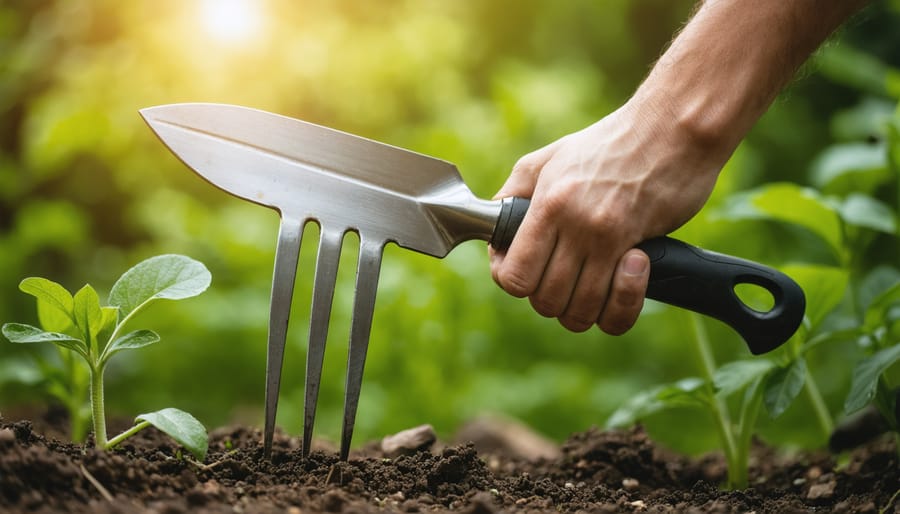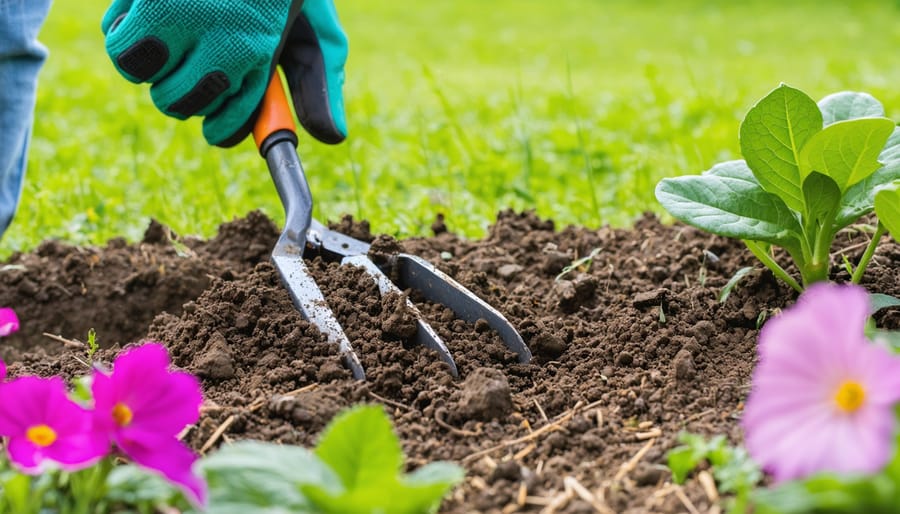A multi-tool transforms your gardening workflow by combining multiple essential gardening tools into one versatile device, operating through a system of pivoting joints and interlocking mechanisms. Think of it as a compact toolbox in your pocket, where each component folds neatly into a protective handle when not in use. At its core, a multi-tool relies on precision engineering – leveraging principles like mechanical advantage and pivot points to deliver the strength of full-sized tools in a compact form. The genius lies in its space-saving design: tools stack together like puzzle pieces, held securely by tension springs and locking mechanisms, yet deploy smoothly when needed. Whether you’re pruning, cutting, measuring, or tightening, understanding how these tools work together enhances your gardening efficiency and helps you maintain your equipment for years of reliable service.
The Basic Anatomy of a Garden Multi-Tool

Handle and Pivot Points
The heart of any multi-tool’s versatility lies in its clever handle and pivot system. Think of it as a Swiss Army knife for your garden – but bigger and more robust! The handles typically feature a butterfly-style design that opens to reveal the various tools nested inside. Each tool is mounted on a central pivot point, allowing it to swing out smoothly when needed and lock firmly in place for use.
What makes this system particularly ingenious is the locking mechanism. When you pull out a tool, it clicks securely into position, preventing any accidental folding during use. Most quality multi-tools use a spring-loaded lock or sliding mechanism that’s easy to operate with one hand, making tool transitions quick and safe.
The pivot points are engineered with precision, using durable materials like stainless steel to ensure smooth operation even after years of use. Many gardeners appreciate how this compact design allows them to carry multiple tools while keeping their tool belt light and manageable.
Locking Mechanisms
Multi-tools stay reliable and safe during use thanks to various locking mechanisms that keep each tool firmly in place. The most common type is the liner lock, which uses a metal strip that slides into position when you open a tool. It’s simple and effective, much like the trusty lock on your garden gate. Another popular option is the frame lock, which is especially sturdy and perfect for heavy-duty tasks around the garden.
For added security, some multi-tools feature a back lock system, which clicks satisfyingly into place behind the tool. This prevents any accidental closing while you’re working. The more premium models often include a button lock or lever lock mechanism, making it easy to release tools with one hand while you’re juggling plants or tools in the other.
Remember, a good locking mechanism should feel solid and secure, without any wiggling or play when the tool is open. This ensures both your safety and the tool’s longevity.
Common Tool Attachments and Their Functions

Cutting and Pruning Tools
The cutting and pruning attachments on a multi-tool are essential features for any gardener. Most quality multi-tools include a pair of bypass pruners, which work like scissors with two sharp blades passing by each other to make clean cuts on live stems and branches up to about half an inch thick. These pruners are perfect for deadheading flowers, harvesting vegetables, and general plant maintenance.
Many models also feature a dedicated pair of scissors, which come in handy for tasks like cutting twine, opening seed packets, or trimming herb stems. The scissors typically fold neatly into the handle when not in use, keeping them protected and sharp.
For tougher cutting jobs, most multi-tools include a sharp knife blade. This attachment is particularly useful for cutting through thick stems, removing stubborn weeds, or even whittling plant stakes. Some advanced models feature both straight and serrated blade options, giving you more versatility in your garden work.
What makes these cutting tools especially practical is how they’re designed to lock securely in both open and closed positions. This safety feature prevents accidental cuts while reaching for other tools. When using any cutting attachment, remember to keep the blades clean and sharp – this not only makes your work easier but also helps prevent damage to your plants by ensuring clean cuts that heal quickly.
Digging and Cultivating Tools
The digging and cultivating attachments on a multi-tool transform it into a versatile gardening companion. These specialized heads typically include a sturdy trowel, various-sized forks, and cultivating prongs that can be swapped out depending on your gardening needs.
The trowel attachment is perfect for precise digging, transplanting, and creating small holes for seedlings. By mastering basic hand trowel techniques, you’ll find that the multi-tool makes quick work of everyday garden tasks. The beauty of having this as part of your multi-tool is that you can easily switch to other attachments without carrying multiple tools.
Fork attachments come in different widths and tine configurations. The broader forks are excellent for turning soil and harvesting root vegetables, while narrower versions work well for precision weeding between plants. The cultivating prongs, often designed with curved tines, are particularly effective at breaking up compacted soil and removing unwanted growth without disturbing your precious plants.
What makes these attachments truly special is their clever locking mechanism. Most models feature a secure click-in system that prevents wobbling during use, ensuring you can work with confidence. The attachments are typically made from rust-resistant materials, making them durable and reliable even in wet conditions.
Maintenance and Care
Cleaning and Storage
Proper maintenance of your multi-tool ensures its longevity and reliable performance in the garden. After each use, gently brush off dirt and debris from all components, paying special attention to the hinges and locking mechanisms. For stubborn soil, use a damp cloth to wipe down the tools, but always dry them thoroughly to prevent rust. Just like other adaptive gardening tools, multi-tools benefit from occasional oiling of moving parts to maintain smooth operation.
When storing your multi-tool, keep it in a dry place away from moisture. Many gardeners find it helpful to use the protective case that often comes with the tool, or store it in a dedicated tool roll. If your multi-tool has a leather holster, condition it periodically to prevent cracking. Before long-term storage, apply a light coat of mineral oil to metal surfaces to prevent corrosion.
Regular maintenance checks are essential – inspect the locking mechanisms, check for loose screws, and ensure all tools fold smoothly. If you notice any resistance or stiffness, a drop of lubricating oil usually does the trick. Remember, a well-maintained multi-tool can serve you faithfully for many growing seasons to come.

Lubrication and Rust Prevention
Keeping your multi-tool well-lubricated is essential for smooth operation and long-term reliability. After each use, especially in wet conditions, make sure to dry your tool thoroughly and apply a light coating of mineral oil or specialized tool oil to all moving parts. Pay special attention to the pivot points and locking mechanisms, as these areas are most susceptible to rust and stiffness.
For rust prevention, consider storing your multi-tool in a dry place or using a silica gel packet in your storage case. If you live in a humid climate or frequently work in damp conditions, you might want to apply a protective coating like WD-40 every few months. Just remember to wipe off any excess oil to prevent it from attracting dirt or transferring to your hands during use.
Should you notice any signs of rust developing, gently clean the affected area with fine steel wool and immediately apply a rust inhibitor. Regular maintenance only takes a few minutes but can add years to your multi-tool’s life while ensuring it’s always ready when you need it.
Multi-tools are truly a gardener’s best friend, offering incredible versatility and convenience in a single, compact package. By understanding how these tools work, you can make the most of their various functions while maintaining your garden efficiently. Their clever design allows you to switch between different attachments seamlessly, saving you time, storage space, and money that would otherwise be spent on individual tools.
Remember to always choose a multi-tool that matches your specific gardening needs and physical capabilities. Regular maintenance, including cleaning after each use and occasional oiling of moving parts, will ensure your tool serves you well for years to come. When using your multi-tool, take time to familiarize yourself with each attachment and practice proper technique for the best results.
For beginners, start with basic functions like pruning and edging before moving on to more specialized tasks. More experienced gardeners will appreciate the advanced features that many modern multi-tools offer. Whether you’re tending to a small herb garden or maintaining extensive landscaping, a well-chosen multi-tool will become an indispensable part of your gardening arsenal.




